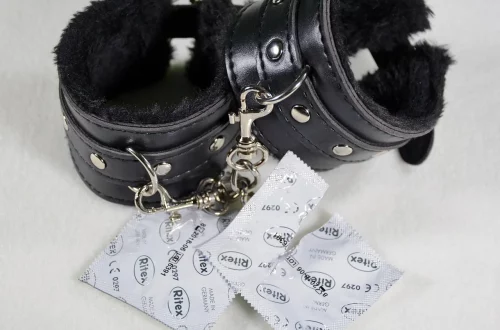
Understanding Dog Tooth Decay Stages with Helpful Pictures
Understanding the dental health of our canine companions is a crucial aspect of responsible pet ownership. Just like humans, dogs are susceptible to various dental issues, with tooth decay being one of the most common problems. Tooth decay can lead to pain, infections, and more serious health issues if not addressed promptly. Owners often overlook their dog’s dental health, assuming that bad breath or tartar build-up is a normal part of aging. However, understanding the stages of tooth decay is essential for recognizing when intervention is necessary.
Regular dental care, such as brushing your dog’s teeth and providing dental treats, can significantly reduce the risk of tooth decay. It’s also important to familiarize yourself with the signs of dental problems, as early detection is key to effective treatment. Through this understanding, pet owners can take proactive measures to protect their dogs from the discomfort and complications associated with poor dental health. In this article, we will explore the stages of dog tooth decay, the importance of dental hygiene, and visual aids that can help you identify problems before they escalate.
Stages of Tooth Decay in Dogs
Tooth decay in dogs progresses through several stages, each marked by specific symptoms and changes in the affected teeth. Understanding these stages can empower pet owners to take action before the situation worsens.
The first stage of tooth decay is often characterized by the formation of plaque, a sticky film that accumulates on the teeth. Plaque develops when bacteria in the mouth combine with food particles and saliva. If not removed through regular brushing or dental chews, plaque can harden into tartar, which is more challenging to eliminate. At this stage, you might notice your dog has slightly bad breath and a yellowish-brown film on the teeth.
As the decay progresses, the second stage involves the development of gingivitis, an inflammation of the gums. This stage is critical because it can lead to more severe periodontal disease if not addressed. Symptoms of gingivitis include swollen, red gums, which may bleed when touched. It’s essential to monitor your dog for these signs, as untreated gingivitis can lead to pain and further oral health issues.
In the third stage, the tooth begins to decay more significantly, forming cavities that expose the inner pulp. At this point, the dog may experience pain, which could manifest as difficulty eating, excessive drooling, or pawing at the mouth. You might also notice a significant change in your dog’s eating habits or preferences, as they may avoid hard foods due to discomfort.
The final stages of tooth decay can lead to tooth loss and serious infection. The affected teeth may become loose, and an abscess can form, resulting in swelling around the jaw or face. Dogs in this stage may exhibit signs of severe pain, such as whining or reluctance to play. It’s crucial to seek veterinary assistance immediately if you observe these symptoms, as timely intervention can prevent further complications.
Importance of Early Detection
Early detection of tooth decay is vital for maintaining your dog’s overall health and well-being. Many pet owners may not be aware of the subtle signs of dental issues until they become pronounced, making regular dental check-ups essential. Just as you would take your dog for routine vaccinations or wellness exams, incorporating dental evaluations into their healthcare routine can help catch problems in the early stages.
One of the most effective ways to ensure early detection is to familiarize yourself with your dog’s mouth. Regularly inspecting your dog’s teeth and gums can help you notice any changes, such as discoloration, swelling, or bleeding. Additionally, monitoring your dog’s breath can provide insight into their oral health. Foul-smelling breath can often indicate underlying dental issues, including decay or infection.
Dental cleanings performed by a veterinarian are another critical component of early detection and prevention. These professional cleanings can remove tartar that regular brushing might miss, and they allow for a thorough examination of your dog’s mouth. Your veterinarian can identify and address potential problems before they escalate into more serious conditions, saving your dog from pain and discomfort.
In addition to professional care, incorporating dental hygiene practices at home is essential. Brushing your dog’s teeth several times a week with toothpaste formulated for pets can significantly reduce the risk of plaque and tartar buildup. Providing dental chews and toys can also help keep your dog’s teeth clean while promoting healthy chewing behavior.
By prioritizing dental health and being vigilant about changes in your dog’s mouth, you can catch tooth decay early and ensure your furry friend enjoys a pain-free life.
Visual Aids for Identifying Tooth Decay
Visual aids can be incredibly helpful for pet owners trying to understand and identify the stages of tooth decay in their dogs. Pictures and diagrams can illustrate what healthy teeth look like compared to those affected by decay, making it easier to recognize problems early.
For example, images showing the difference between healthy gums and those affected by gingivitis can be particularly instructive. Healthy gums are typically pink and firm, while gums afflicted by gingivitis appear swollen and red. Visual comparisons can help pet owners better assess their dog’s oral health during routine checks.
Additionally, diagrams illustrating the progression of tooth decay can provide a clear understanding of how quickly dental problems can escalate. One set of images can depict the initial stage of plaque formation, followed by images showcasing tartar buildup, gingivitis, and advanced decay. This visual representation can serve as a guide for pet owners, helping them to recognize changes as they occur.
Furthermore, many veterinary websites and dental health resources offer galleries of dental problems in dogs. These resources can be invaluable for pet owners unfamiliar with dental issues, providing a reference point for what to look for during inspections.
Incorporating visual aids into your understanding of dog dental health can enhance your ability to detect issues early, allowing for timely intervention and care. By being proactive and informed, you can help ensure your dog maintains a healthy mouth and avoids the painful consequences of tooth decay.
**Disclaimer:** This article is intended for informational purposes only and should not be considered medical advice. Always consult a veterinarian for professional guidance regarding your dog’s health and dental care.




